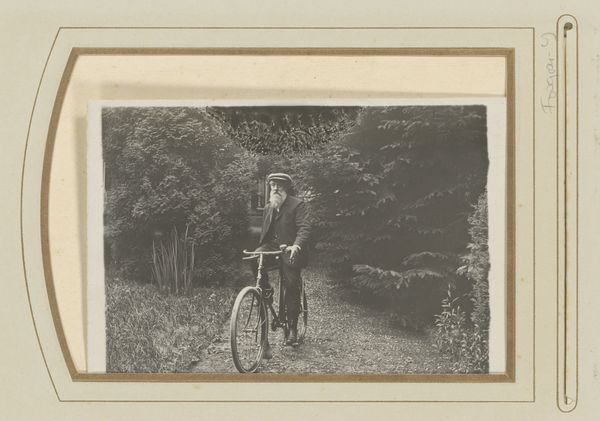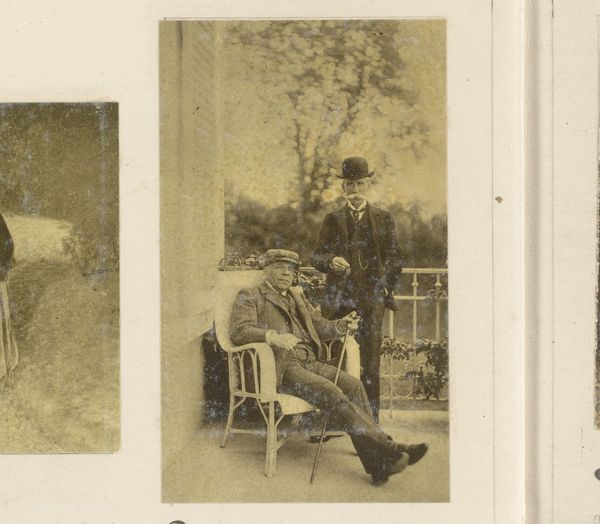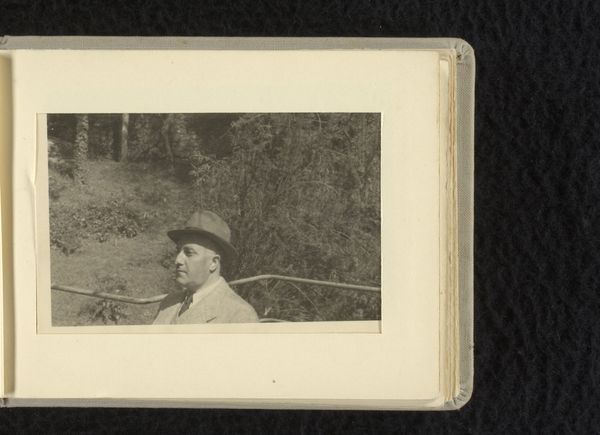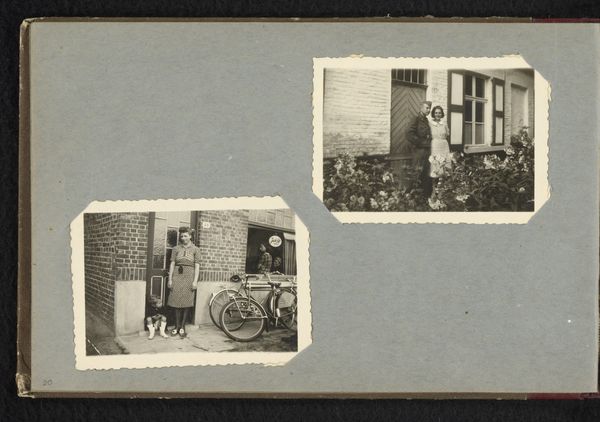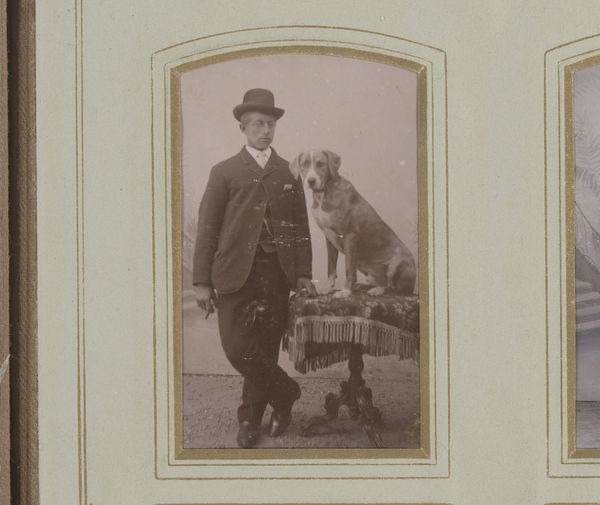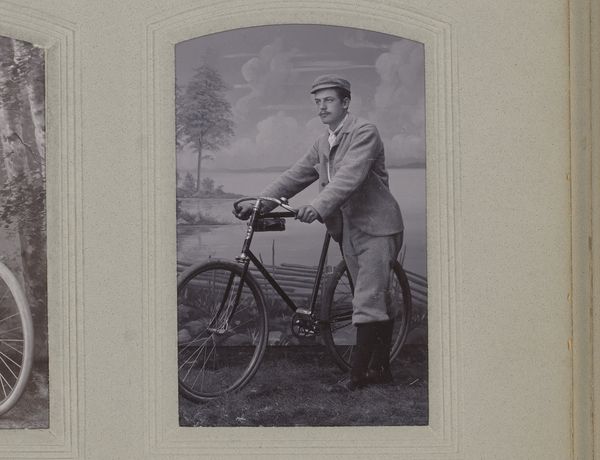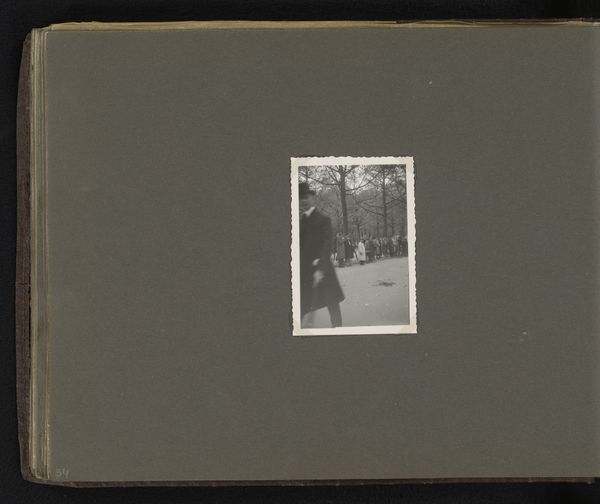
Dankbetuiging met portret van C.P. de Groot op een driewieler 1900 - 1906
0:00
0:00
photography
#
portrait
#
photography
#
genre-painting
#
modernism
Dimensions: height 89 mm, width 140 mm
Copyright: Rijks Museum: Open Domain
Curator: Here we have an interesting piece, titled "Dankbetuiging met portret van C.P. de Groot op een driewieler"—loosely translated, "Acknowledgement with portrait of C.P. de Groot on a tricycle." The piece is dated between 1900 and 1906, placing it squarely in the Modernist period. Editor: My first impression is a feeling of gentle amusement. It's a rather dignified older gentleman perched on what appears to be a child's tricycle. The tones are soft, lending an almost dreamlike quality to this scene. Curator: Indeed. The work’s existence within early Modernism situates it amid evolving discourses surrounding representation and societal expectations. We can interpret De Groot’s portrait through a lens of disability studies. What statements might this portrait be making about ability and age? Does the tricycle offer freedom or highlight dependency? These complexities deserve recognition when analyzing an image that appears straightforward at first glance. Editor: I appreciate that perspective. From a purely material point of view, I am intrigued by the photographic processes used to create this mounted image, and I think they probably were key in shaping meaning here. Look closely at the layered frame, for instance, compared to the sepia tones. There is great intent in the materials involved. I wonder, for example, whether this picture had social implications for labor at the time. Was the sitter of particularly elevated rank compared to those who worked on its physical form? Curator: That’s a valuable connection. It speaks to the social networks present during this era and the socio-political implications present even in personal celebratory gestures. Editor: Absolutely. By considering materials, social circumstances and modes of production together, new art histories come to life. It forces us to examine a variety of related systems to see the value that photography has produced. Curator: Reflecting on both materiality and social narratives allows us to delve deeper into what exactly the purpose of image making and the creation of this photographic acknowledgement were, within its time, and what those processes could suggest to us now. Editor: Indeed. By investigating further how images transform matter itself, new ways to assess history come into existence.
Comments
No comments
Be the first to comment and join the conversation on the ultimate creative platform.

